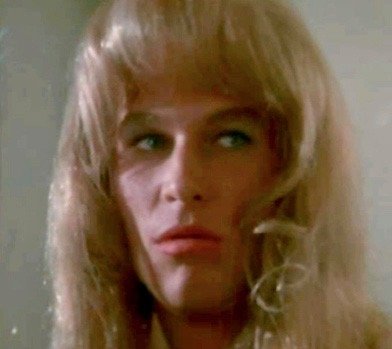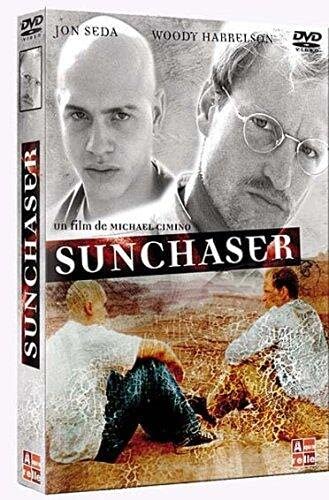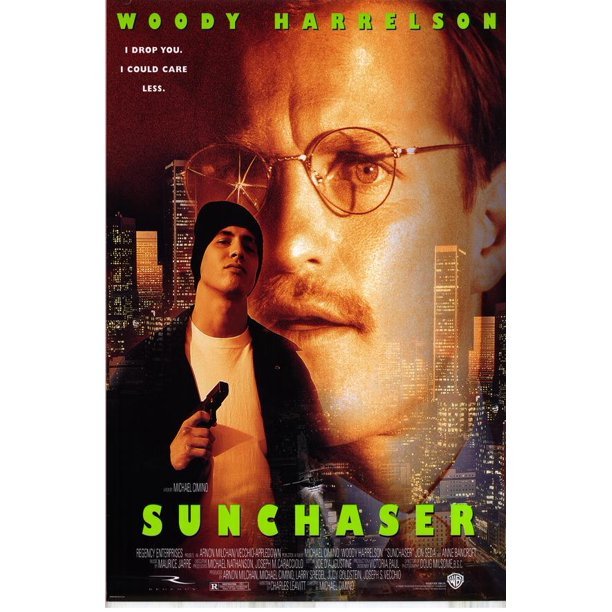Michael Cimino's Directorial Career Kicked Off with a Bang Thanks to 1974's Thunderbolt and Lightfoot But Ended With a Whimper
Michael Cimino was certainly not the biggest of the ferociously independent 1970 auteurs whose triumphs, addictions and downfalls were chronicled in Peter Buskind’s dishy chronicle of the New Hollywood of the late 1960s and 1970s, Easy Riders, Raging Bulls. But Cimino may have suffered the biggest, most dramatic and most public fall from grace. 1978’s The Deer Hunter, which won five Academy Awards, including Best Picture, Best Director and Best Supporting Actor for Christopher Walken, made Cimino’s career and catapulted him to the apex of the A-list.
Cimino’s famously troubled follow-up, 1980’s Heaven’s Gate, is widely credited with fundamentally ending not only Cimino’s career as a major filmmaker but also the studio that made it, and for good measure, an entire wave of late 1960s and 1970s auteur-and-character-driven, socially conscious cinema that The Deer Hunter embodied.
To make matters worse, Cimino was the Troy Duffy of his era, except instead of his flagrant misbehavior and entertainingly over-the-top douchebaggery forming the basis of a schadenfreude-rich exercise in giddy professional revenge like the Troy Duffy/The Boondock Saints documentary Overnight, Cimino’s crimes against professionalism and his bosses over at the studio formed the basis of Stephen Bach’s riveting account of his traumatic experience overseeing Heaven’s Gate as an executive, 1985’s Final Cut. It’s a book about the making and unmaking of the notorious flop that rivals Julie Salomon’s Bonfire of the Vanities tell-all The Devil’s Candy as the ultimate inside look at cinematic failure at its most operatic and surreal.
The Deer Hunter made its writer-director auteur du jour for a brief idyll until the one-two punch of Heaven’s Gate’s extraordinary and very public failure and The Final Cut made Cimino the poster boy for the drugged-up excesses and epic bloat of 1970s cinema. The closest Cimino came to a hit post-The Deer Hunter was almost directing Footloose but heaven knows what that would have been like in Cimino’s hands.
An increasingly conservative Hollywood establishment lost faith in Cimino following Heaven’s Gate’s epic failure but before the fall Cimino proved himself as a screenwriter on the science fiction cult classic Silent Running and the Dirty Harry sequel Magnum Force, and as the writer-director of 1974’s Thunderbolt & Lightfoot, a critical and commercial success that won star Jeff Bridges the second of what would eventually be seven Oscar nominations, this time for Best Supporting Actor. (Bridges finally won Best Actor for 2010’s Crazy Heart.)
Bridges is such an unassailable icon of rugged American masculinity that it can be easy to forget how gorgeous he once was. The young Bridges wasn’t just handsome, he was downright pretty, with delicate, feminine features and a kind of soft beauty. Thunderbolt & Lightfoot finds Bridges at the height of his androgynous beauty and laid-back charisma.
Bridges isn’t just sex personified in his black leather pants, bedroom eyes and non-stop come-ons to any pretty woman in his vicinity: he also makes a disconcertingly beautiful woman (in a Bugs Bunny-in-a-dress kind of way) during the long stretch in the third act when he’s dressed in drag as a distraction. Bridges’ Lightfoot is a connoisseur of fast cars and even faster women. He’s a real live-wire who connects instantly with Thunderbolt (Clint Eastwood), a war hero with an impeccable criminal background the similarly larcenous Lightfoot intuitively senses and wishes to exploit for his own personal gain.
For its first half, Thunderbolt & Lightfoot is an exquisitely 1970s exploration of a pair of criminal-minded outsiders living by their own moral code on the fringes of both straight society and the criminal world.
It’s a rambling, shambling, cockeyed and sideways road picture enlivened by the electric, yin-and-yang chemistry between Eastwood and Bridges. As a career criminal who takes a shine to the cocky kid courting his friendship like a lost golden retriever puppy looking for an owner, Eastwood exudes his usual stoic, effortless authenticity. Bridges does much, if not all, of the acting in the team, delivering a funny, tender, big-hearted star turn that frees up Clint Eastwood to be Clint Eastwood. Nobody, but nobody is as good at being Clint Eastwood as Clint Eastwood, and God knows many people have tried.
four men with small genitalia
Thunderbolt & Lightfoot is modest in a manner specific to its era. It’s a small movie about the small dreams of small people but even at the beginning of his career, Cimino aspired to an epic scope he would realize with The Deer Hunter and Heaven’s Gate. Cimino shoots his actors in a way that highlights how insignificant and unimportant they are when juxtaposed with the vast, beatific beauty of nature.
In his directorial debut, Cimino loves the open road and untamed nature and big skies. The seeds of Cimino’s later films are here in embryonic form as the movie continually bucks against the constraints of both low-key character studies and the heist genre. Before he told Big American Stories in The Deer Hunter and Heaven’s Gate, Cimino warmed up with a movie that’s about the idea of America on some level but is also about two guys and their poignantly banal little dreams of a big score. In true defeatist 1970s form, even when you seemingly get away with it, you don’t actually, you know, get away with it. Even the winners lose and victory is always both illusory and transitory.
Eastwood and Bridges make for an all-time great team. They only made one movie together but they sure made it count. The genre-hopping action-comedy-drama has an antagonist worthy of its charismatic anti-heroes in George Kennedy’s Red Leary, a perpetually sweaty, beat-red Frenemy, war buddy and criminal compatriot of Thunderbolt who re-enters his former accomplice’s life along with runty sidekick Geoffrey Lewis (who is heartbreaking and hilarious throughout, but never more than when he’s outfitted in a sad little ice cream man uniform when the crooks get straight jobs as cover) and ends up working with Thunderbolt and Lightfoot on the big heist that dominates the film’s second half.
Thunderbolt and Lightfoot grows more conventional and genre-minded as it proceeds but never at the expense of its grubby, intense personality. Cimino was telling an ultimately tragic story about dreamers grasping desperately for that big brass ring but he benefitted from the mega-watt presence of two of the greatest movie stars of all time at their best in the title roles.
Twenty-two years after Thunderbolt and Lightfoot established Cimino as an ambitious, talented young filmmaker on the rise, the filmmaker’s career ended on a dispiriting and sadly conclusive note with 1996’s Sunchaser, a woeful road movie with just enough parallels to Thunderbolt & Lightfoot to suffer by comparison.
Like Thunderbolt and Lightfoot, this is a road movie and a buddy movie, but the road was a whole lot more interesting the first time around, as were the buddies. In Thunderbolt and Lightfoot, Cimino had a perfectly cast Clint Eastwood and Jeff Bridges as star. Sunchaser, in sharp contrast, has a uniquely miscast Woody Harrelson cosplaying Ned Flanders as a Yuppie doctor opposite Jon Seda’s Blue. Blue is a sixteen year old cartoon of a tough yet spiritual gangster with a soul but he’s played by a twenty-six-year-old (Jon Seda) who could easily pass for thirty-six.
The bewildering decisions begin with a lurid neon Miami Vice font and color scheme for the opening credits that would be perfect in a 1985 movie with a pulsating score by Harold Faltemeyer but seems bizarrely anachronistic for a movie that was released (after a fashion) in 1996, long after the 80s ended. The surreal miscalculations continue with the insane miscasting of affable stoner icon Woody Harrelson as cold-blooded doctor Dr. Michael Reynolds.
Harrelson is a terrific actor but he does not convey an intimidating intellect naturally. Or arrogance. Or nerdiness. Or geekiness. Yet Sunchaser asks us to buy Harrelson as the kind of prickly, obnoxious elitist who is more concerned with buying a two million dollar dream house for his girlfriend and making sure the right kind of cheese is in his fancy salads than he is with the health or happiness of his patients.
Before his character undergoes an astonishingly unconvincing transformation into a big-hearted mensch, Harrelson talks and acts like Dave Chappelle or Richard Pryor when they’re assuming the uptight personality and voice of a buttoned-up white person. It does not help that the character’s creepy mustache and norm core wardrobe give the doctor an unmistakable Ned Flander vibe.
Cimino’s dreadful final film stops just short of having Harrelson’s Dr. Preppie constantly polish his collection of Faberge eggs and antique monocles to convey his effete nature and disconnect from life in the barrio and the mean streets, where life is real, man. He begins the movie inexplicably meaner than the devil and ends it saintlier than Christ, and at no point is his moral arc from one-dimensional Jerk M.D. to one-dimensional hero ever convincing.
Dr. Reynolds’ cushy but spiritually empty existence changes forever when a terminally ill 16 year old half-navajo, half-Hispanic gangbanger nicknamed Blue (Jon Seda) kidnaps the nerdy Oncologist and makes him drive to a mountain in Arizona where he hopes to encounter a Holy Man on a magical mountain who will cure Blue of his fatal disease.
Sunchaser has no problem establishing why Dr. Reynolds and Blue might initially hate each other, beyond both characters being laughably broad caricatures badly written and incompetently executed. The screenplay by Charles Leavitt feels like it was assembled with the aid of a woefully out of date 1985 rap slang dictionary.
As a middle-aged man playing a 16 year old gangbanger who’s about as authentic and culturally sensitive as one of those “Homies” figurines they used to sell in supermarket vending machines, Seda has enough problems without the movie asking him to deliver lines about “rolling in your fresh wheels, stacking your loot.” The film is so enamored of the phrases “Bust a cap” and “peel a cap” that it sees fit to use both repeatedly for what must be the first time since the mid 1980s.
Blue and Dr. Reynolds spend much of the film hating each other, albeit not as intensely as I did. Then the movie’s redemptive character arc calls for the selfish doctor to suddenly begin behaving in an incongruously selfless fashion as his shriveled, black little heart grows ten times bigger due to the angry demands of the plot. Blue similarly makes an astonishing instant transformation from a glib, over-the-top caricature of a tough guy Hispanic gangbanger into a broad caricature of Native American spirituality.
For a movie by the director of Heaven’s Gate and The Deer Hunter, Sunchaser suffers from a bizarre and uncharacteristic lack of ambition and personality. The only really epic thing about it, beyond some nice scenery, is a runtime that runs a bloated, shapeless and entirely excessive 122 minutes. There’s absolutely no reason this story couldn’t be wrapped up in 90 minutes. Then again, there’s no reason this story had to be told at all, particularly with these actors, this director and this script.
Cimino didn’t die until 2016 at 77 but he never directed another feature-length film after Sunchaser. He lived out his final decades as something of a recluse, a consummate Hollywood and show-business outsider who hid from a world that half-forgot him, and half continued to view him with morbid curiosity, as a man capable of greatness but also world-class self-destruction who squandered an incredible gift.
Cimino’s first three films suggest that the two decades (decades!) Cimino spent not writing or directing feature-length films leading up to his death is nothing short of a tragedy. Sunchaser is abysmal enough, however, to make a disturbingly convincing argument that maybe studio executives were right to not want to get into business with a man whose last film was this dreadful.
Sunchaser isn’t just shockingly, embarrassingly, almost amateurishly bad. It’s career-killingly bad. It’s bad enough to have killed Cimino’s already flagging career as a filmmaker, although heaven knows Cimino’s famously troubled personality and notoriously unprofessional, extensively documented professional habits also played a big role in ending what should and could have been one of the all-time great careers but instead is notable at least partially for its extraordinary unrealized potential.
The Joy of Trash, the Happy Place’s first non-"Weird Al” Yankovic-themed book is out! And it’s only 16.50, shipping, handling and taxes included, 30 bucks for two books, domestic only at https://www.nathanrabin.com/shop
PLUS, for a limited time only, get a FREE copy of The Weird A-Coloring to Al when you buy any other book in the Happy Place store!
Buy The Joy of Trash, The Weird Accordion to Al and the The Weird Accordion to Al in both paperback and hardcover and The Weird A-Coloring to Al and The Weird A-Coloring to Al: Colored-In Special Edition signed from me personally (recommended) over at https://www.nathanrabin.com/shop
Or you can buy The Joy of Trash here and The Weird A-Coloring to Al here and The Weird Accordion to Al here
Help ensure a future for the Happy Place during an uncertain era AND get sweet merch by pledging to the site’s Patreon account at https://www.patreon.com/nathanrabinshappyplace We just added a bunch of new tiers and merchandise AND a second daily blog just for patrons!
Alternately you can buy The Weird Accordion to Al, signed, for just 19.50, tax and shipping included, at the https://www.nathanrabin.com/shop or for more, unsigned, from Amazon here.
I make my living exclusively through book sales and Patreon so please support independent media and one man’s dream and kick in a shekel or two!











